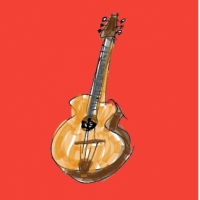DjangoBooks.com
Welcome to our Community!
Categories
- 20K All Categories
- 1.1K General
- 476 Welcome
- 59 Archtop Eddy's Corner
- 146 CD, DVD, and Concert Reviews
- 385 FAQ
- 26 Gypsy Jazz Italia
- 27 Photos
- 202 Gypsy Picking
- 21 Unaccompanied Django
- 15 Pearl Django Play-Along Vol.1
- 17 Gypsy Fire
- 45 Gypsy Rhythm
- 1.4K Gypsy Jazz University - Get Educated
- 131 Gypsy Jazz 101
- 227 Repertoire
- 219 History
- 708 Technique
- 51 Licks and Patterns
- 6 Daniel Givone Manouche Guitare Method Users Group
- 20 Eddie Lang Club
- 1.3K Gypsy Jazz Gear
- 802 Guitars, Strings, Picks, Amps, Pickups and Other Accessories
- 460 Classifieds
- 49 Recording
- 62 Other Instruments
- 18 Violin
- 5 Mandolin
- 22 Accordion
- 7 Bass
- 10 Woodwinds
- 347 Gypsy Jazz Events
- 143 North America
- 109 Europe
- 95 International
In this Discussion
crazy idea of the day
Here this will make you laugh: I love GJ guitar full stop, but love playing my archtops just as much, more sometimes, and I am crazy about flat wound strings. I like the feel on my fingers and I like the tone.
My GJ guitar has all the volume you could ever want, and top end galore. But - even though it has the Favio size body, I would love to get more bottom end on it.
So - could you even try to use flatwounds on a GJ guitar? I would imagine the tension would hoark the neck, and I am sure as hell not going to try it on mine - but has anyone else ever thought of this?
There it is your laugh of the day, enjoy!
My GJ guitar has all the volume you could ever want, and top end galore. But - even though it has the Favio size body, I would love to get more bottom end on it.
So - could you even try to use flatwounds on a GJ guitar? I would imagine the tension would hoark the neck, and I am sure as hell not going to try it on mine - but has anyone else ever thought of this?
There it is your laugh of the day, enjoy!










Comments
Have you had the chance to compare with other guitars in the same room or environment?
Is that how you hear your guitar, or is that according to an audience or someone who is a few feet away in front of the guitar, because what sound goes across the room will often be different to how it sounds to the person bent over the instrument.
Then there are other considerations, if you regularly play in a 'bright' sounding room, where the highs are reflected off the walls, and maybe introducing some soft fabrics would alter the tone.
Then there is picking technique too, but the biggest variable affecting the tone of any acoustic guitar, and certainly applies to GJ playing, is how one holds the guitar. I see many who hold it too tight against their body which has the effect of damping much of the tone. It should be held away from the body so the back is free to vibrate.
Meanwhile, sorry for the distraction but now you have my curiosity regarding how flatwounds would sound.
Somebody on the forum said how they used to make flatwounds themselves back in the 60s when they weren't widely available. I forget the details though. I imagine you would use a fine sand paper and give each wound string several passes. You could try that with the GJ string set. It's an interesting idea.
Have you tried a silk string set? They have less bright sound. Maybe if the high end was a little bit tamed, low end would come through more to your satisfaction.
LaBella makes a silk strings GJ set with the low E going to 0.50 gauge so you get a little fatter low end and less bright sound. You could try a set and give them a DIY flatwounds treatment.
I don't think Argentines could handle much, if any, sanding - just regular playing wears them out such that the windings come loose.
Good point.
I see that besides Thomastic, LaBella and D'addario also make low tension flats, both .11s. D'addario is chrome over stainless, LaBella stainless steel.
I will check out some of these ideas and if any work out I will let you know.